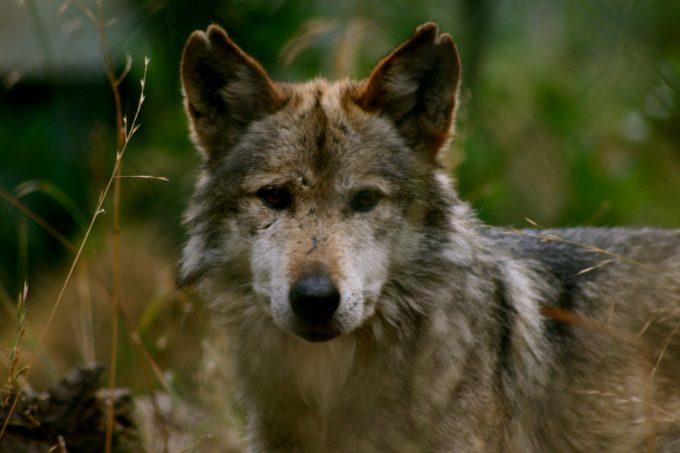The Specter of Deep-Sea Mining

Investigation into manganese nodule mining on the seabed in the Clarion-Clipperton Zone. Photo: ROV-Team/GEOMAR. CC BY 4.0
With no public debate and scant publicity, deep-sea mining has gotten quietly underway in recent years. Exploratory mining contracts have been granted for over 1 million square kilometers of seabed in international waters, while the International Seabed Authority—the official UN body regulating ocean “resources”—deliberates how to cloak the enterprise in sustainababble attire. (Apparently, exploratory mining does not require regulations to proceed.) The deep-sea mining industry has poured hundreds of millions of dollars into constructing the gigantic machinery and technological assemblages to scour the depths. They saw no reason to delay and ascertain if the world is on board in the first place with their looting the seabed. With characteristic corporate insolence, they have manufactured the war machinery that will carry it out.
What is targeted: the polymetallic nodules of the ocean floor, materials of hydrothermal vents, and minerals and metals of seamounts and continental shelves. Before glazing over these apocryphal places of the deep blue, please be apprised that they are all old-growth habitats of rich and largely unknown life.
What does the deep-sea mining industry, and the nation states sponsoring its rampage, want to purloin from these ancient habitats? Cobalt, copper, gold, silver, manganese, nickel, rare earths, and more, all the ingredients required for the high tech industry, the military-industrial complex, and the “green economy.” The latter (you guessed it) is getting all the publicity, with the “new gold rush” being parlayed as necessary for saving humanity from climate change.
This recent development in the extractivist machine should not be underestimated, nor if we can help it be allowed to manifest as the fait accompli that its perpetrators are angling for. The fact that even a news outlet as incisive as The Guardian entertained the official framing of ocean mining as a “lesser evil” than climate catastrophe is baffling and heartbreaking. For sure, it is an indicator of how far down the slippery slope of muddled reasoning society is sliding. Given the international political track record to date, and how far along climate breakdown we already are, can anyone believe that deep-sea mining is going to save the world from climate change, or, for that matter, even contribute a little to saving the world from climate change?
This latest chapter of the war perpetrated against Earth is particularly despicable for a number of reasons. One, it masquerades as green. Two, it is being launched precisely at the historical moment that all violent operations against the planet need to be halted, phased out, and healed. Three, with shameless prerogative it’s already underway. Four, it’s being shoved into our faces as “inevitable.” Five, it is targeted against the last place on Earth that remains relatively free of despoliation. Six, it is an attack against a biodiverse biome smugly christened “the common heritage of humankind.” (Our oceans, according to the CEO of The Metals Company.) On all six counts, and for the extinctions, destruction, suffering, and pollution it heralds, the masterminds of deep-sea mining only deserve contempt. Indeed, I’m going to bypass decorum and say to the corporate-cum-political goons gearing up for more nature desecration: Your window dressing is repugnant and your actions worse.
The deep sea is Earth’s largest biome. There are beings who live there—obviously but apparently in need of stating. There are millions of undiscovered species in the ocean depths, splendors awaiting to be witnessed, knowledge to be revealed, and beauty to astound—in the very place where life likely originated. The polymetallic nodules, hydrothermal vents, seamounts, and continental shelves targeted for mining are deep-time habitats that took millions of years to create, accrue, and become. They harbor endemic species of all sizes, shapes, and constitutions, and they are destinations for cosmopolitan animal travelers. They invite us to transcend the warped thinking that they contain “resources” for appropriation. These habitats, like all Earth’s places, ask us to awaken to the realization that the last chance we have to turn around the catastrophic polycrisis of the “Anthropocene” is to recognize the majesty of the living planet, the only place humanity will ever belong with, and end civilization’s war against it.
The ecological criminals disguised as green-economy knights sell deep-sea mining with thinly veiled blackmail. Here’s what they say: If we want a green economy and the end of poverty, we either mine the land or we mine the seas. Better to mine the seas, they say, since nobody lives there (they don’t say that—they imply it), if we want to save the world from climate breakdown. Nothing in this extortionist logic is true. It is not better to mine the ocean: It is not better to add another chapter to Earth’s ruination, nor add more ocean destruction on top of industrial fishing, plastic pollution, and acidification. It is not better to vandalize ancient habitats that will cause extinctions. And does anyone believe that mining the seabed will be piously accompanied with the end of mining the land? Finally, regarding the disingenuous pretext: Deep-sea mining will not stop rapid climate change, nor even put a dent into climate-change havoc. Simply stated, mining the seabed is a new mega-weapon in the human supremacist regime that is destroying Earth.
The solutions to our perilous predicament are clear, if only the familiar tug of anthropocentric avaricious madness could be superseded. They are, in no particular order: Recycle like our hair’s on fire because our hair’s on fire. Conserve materials and energy by ending the incessant production of new lines and models of products, fast fashion, and rapid obsolescence; make stuff that’s durable, fixable, recyclable, shareable. Protect the natural world generously, for its own sake and because our lives and sanity depend upon it. Protect the global ocean, for starters by making the high seas a strictly protected area from all extractivism, including industrial fishing. Protect seas, land, freshwaters, as well as species and their abundances ambitiously. Earth, expansively protected and restored, will save us from climate change. Let’s act to enable the creativity and splendor of earthly life to resume and flourish. Earth’s sacred being is all around us and runs in our veins. Leaving the depths of the seas undisturbed, to continue being and becoming what they are, we might take up meditative practices (available in the spiritual traditions of all human cultures) to discover the hidden riches of our own depths.
Further on solutions: Downscale global trade, reduce commodity production, abolish luxuries, slash the workweek, grow urban and rural gardens. Embrace mostly plant-based eating so we can shrink the global livestock population that is devastating the planet, while improving human health and reducing animal suffering. Also, decelerate and reverse human population growth. How? By keeping girls in schools, abolishing child marriage, giving women and men accessible and affordable family planning services, and tutoring young people, comprehensively, about sexuality. Encourage humanity to embrace adoption: Adopt babies, adopt children, adopt animals who are already here and need loving homes. We must also come to terms with the coming massive movements of displaced people—from environmental degradation, freshwater shortages, climate breakdown, and war and conflict—so we may become receptive: Borders will not stop refugees, nor should they. Lastly, we must cease sprawling the industrial infrastructures that are chewing up nature and vandalizing the face of the planet.
Does all this sound like an extremely tall order? An extremely tall order is what it will take to stop the runaway mass extinction and climate breakdown train. Deep-sea mining will only add another freight car.
The establishment ignores the above imperatives, becoming instead increasingly invested in replacing the fossil-energy fueled ecocidal economy with a solar-wind-nuclear-hydro fueled ecocidal economy. The powers-that-be are drowsily awakening to the hurdles of catastrophic climate change—to the ways the latter threatens to throw a monkey wrench into civilization’s ongoing war on nature. Here’s what’s on their wishlist: If we could only address the problem of climate change with more mining—not really, but let’s pretend—humanity might saunter merrily toward The Economist’s wistful vision of “10 billion reasonably rich people” inhabiting a colonized and killed planet to make it so. Such an aspiration is extremely unlikely to manifest and lethal folly to pursue. Yet whether plausible or implausible, to wish for human wealth built upon Earth’s desolation only proves the alias “Homo sapiens” to be a giant’s robe hanging loose upon a dwarfish thief.[1]
Note
[1] Shakespeare’s Macbeth Act 5 scene 2.
This first appeared on Earth Tongues.

